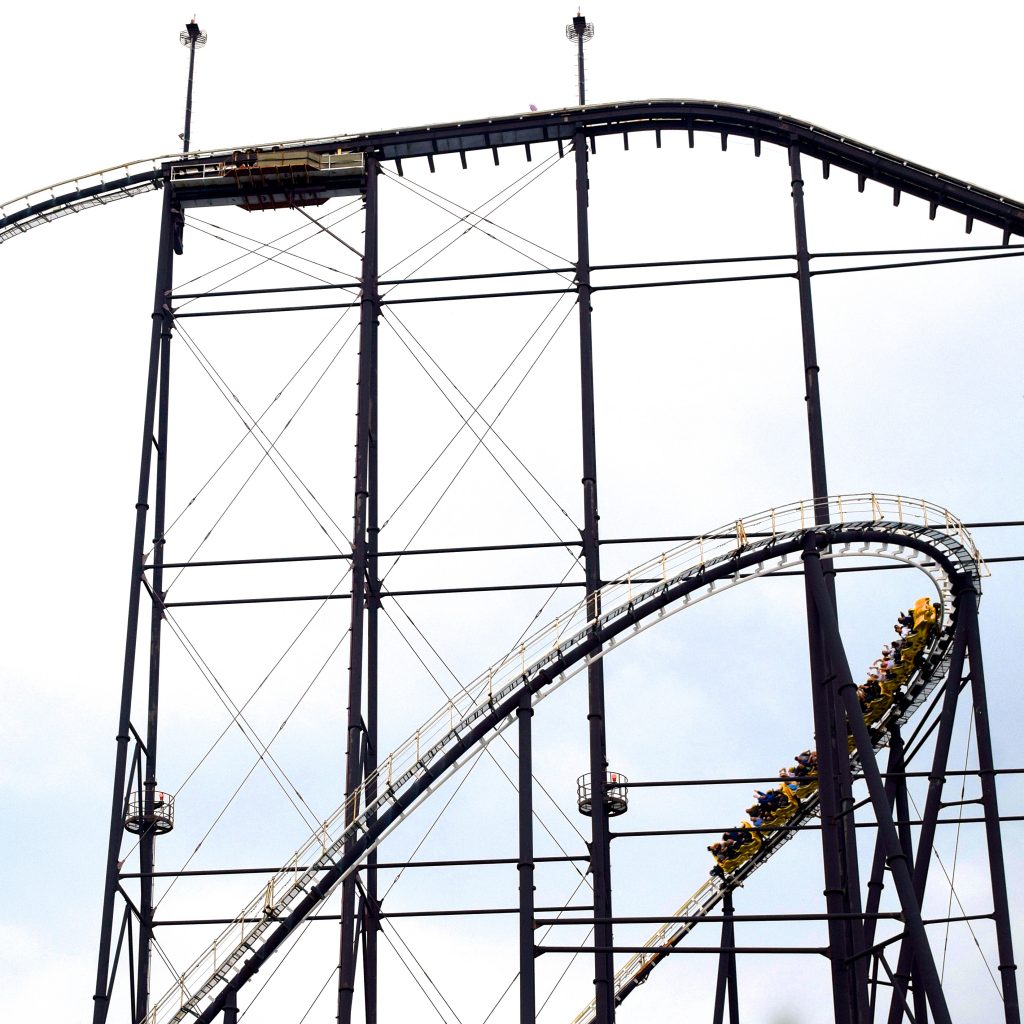Alexander: Ok, the title of this article is kind of a loaded statement. How is Fuji-Q like Magic Mountain? Like, besides the obvious reasons?
To be honest, they’re not as similar as we’d originally pictured; Fuji-Q Highland is shockingly small, and, despite their 4 major coasters drawing some obvious parallels, their collection of coasters overall is just a fraction fo the size of Magic Mountain’s. Still, we know a lot of Six Flags Magic Mountain fans who will take personal interest in the similarities between the parks, and, as long as we have a “Cedar Point of Japan” (Nagashima Spa Land), we might as well have a Japanese Magic Mountain.
– In the past, many of our images have been posted, featured, and shared on forums, social media platforms and websites around the web. We work hard to provide the coverage that we do, and we encourage our audience to share our content and use our images, BUT ONLY IF proper credit is given to thecoasterkings.com. Thank you! –
Fuji-Q Highland has notoriously bad operations; multi-hour lines for all major rides, horrible dispatches, and uncomfortable queues. Magic Mountain critics will find that this description echos past Six Flags visits, but in all fairness, both Magic Mountain and Fuji-Q have better operations than their reputations seem to suggest.
Rain, the key enemy of Fuji-Q coaster operations, threatened to wipe out our entire day, but by the sheer grace of Mother Nature and Fuji-Q slower-than-expected reaction to the wet weather, we got rides on all 4 of the major coasters of our visit. It was perhaps our hardest-fought victory and easily the sweetest.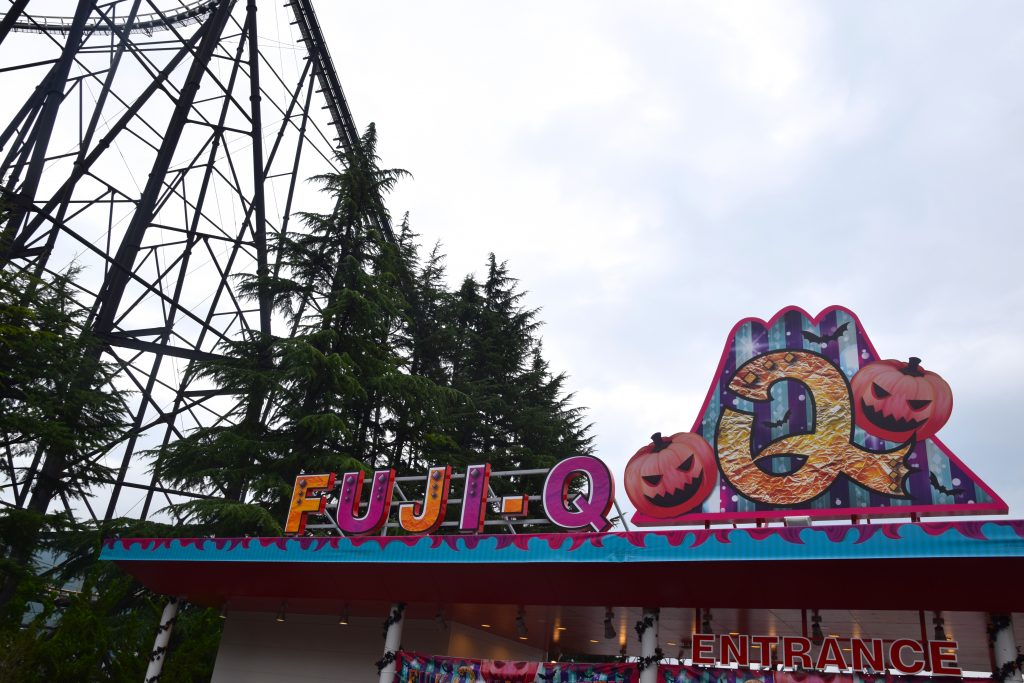
It was a mad dash from the coaches to the gate. Every move would have to be swift in order to achieve success. The weather loomed like a ticking time-bomb with no clock – how long we had to get on whatever rides we could manage was anyone’s guess. 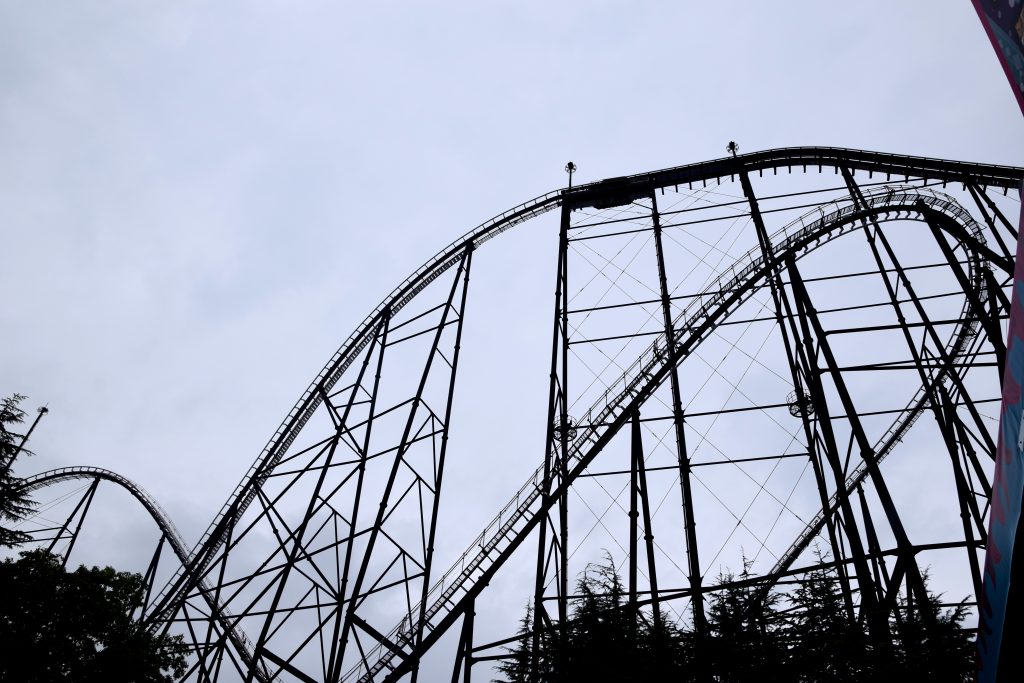
Fortunately, 3 of the 4 major coasters opened right at rope drop. We sprinted to our first priority, Do-dodonpa. Nearby, guests enjoyed their first rides on the park’s newest coaster, Takabisha.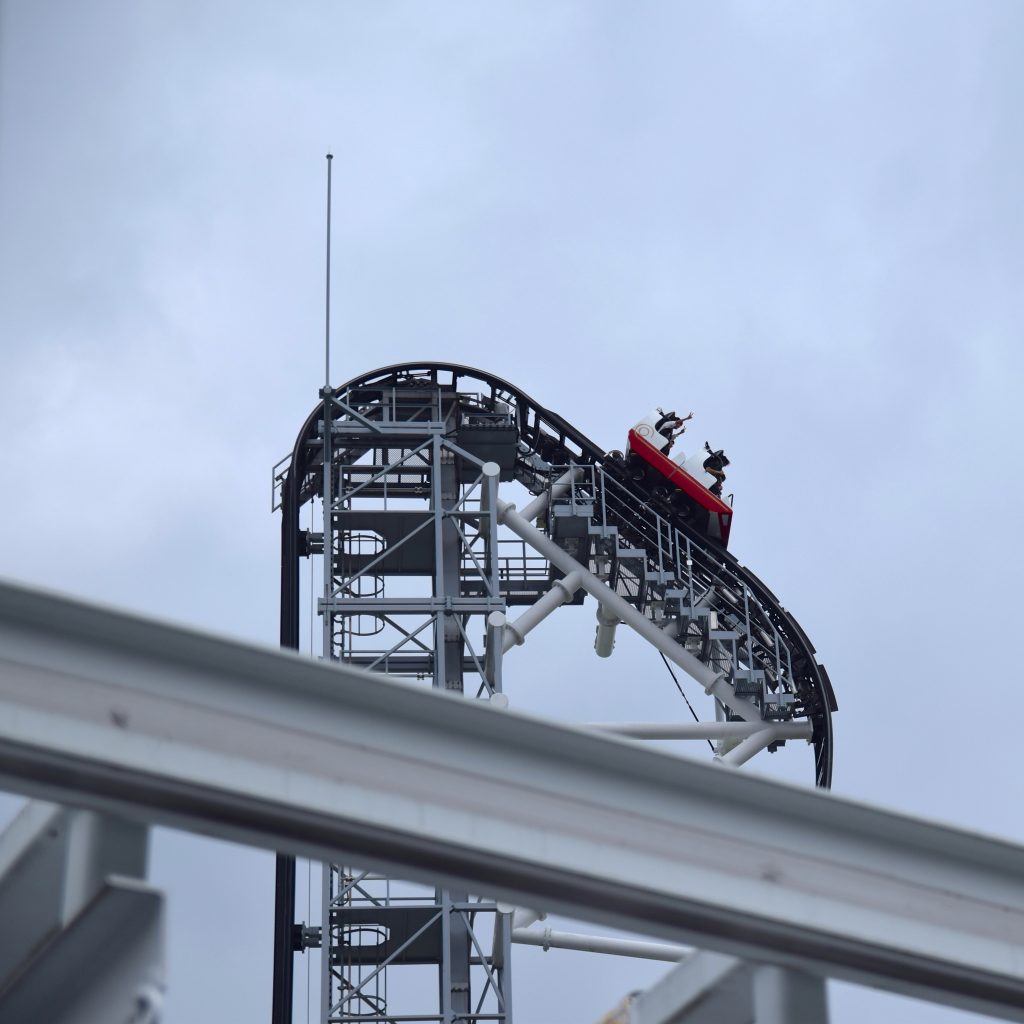
Dispatches on Do-Dodonpa were surprisingly frequent, but 8 passenger trains still made for slow going. Once we were in line, we noticed guests purchasing “quick pass” tickets for the ride. While we at first kicked ourselves for not investigating this option before getting in line, we soon learned that the soonest return time for the quick passes was a 1/2 hour after park open. 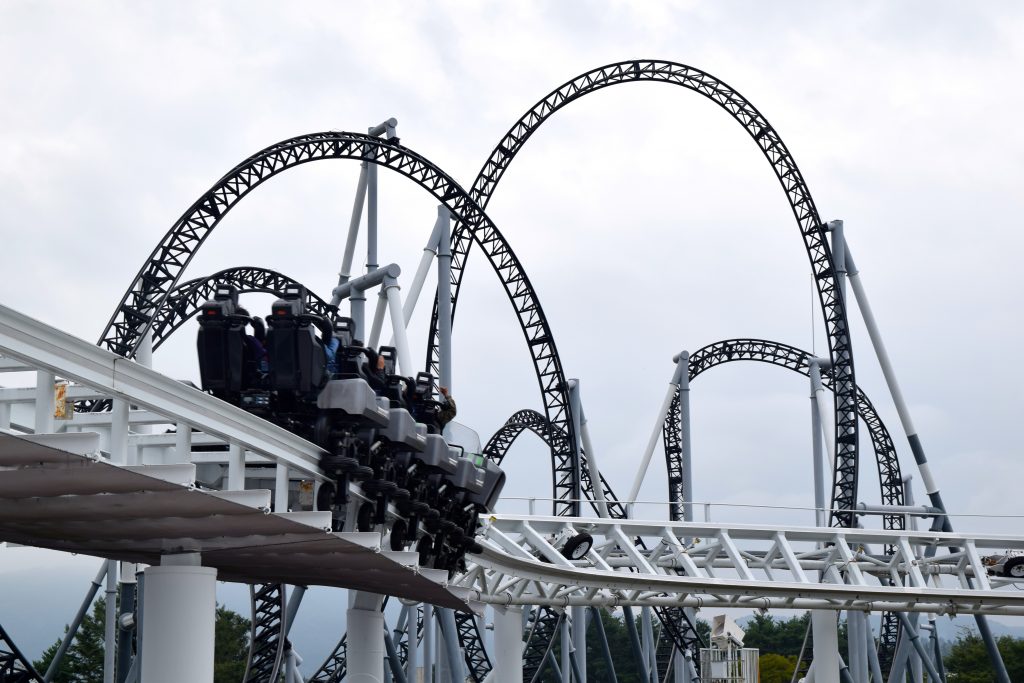
As luck would have it, our standby wait was exactly 1/2 an hour; as we exited the ride, we passed friends of ours who bought the first quick passes of the day for Do-dodonpa. From that point on, queues for rides really started to crawl – despite relatively light crowds, lines for rides quickly stretched to 2+hrs. For about $15, however, a quick pass could get you on the next train of any major coaster.
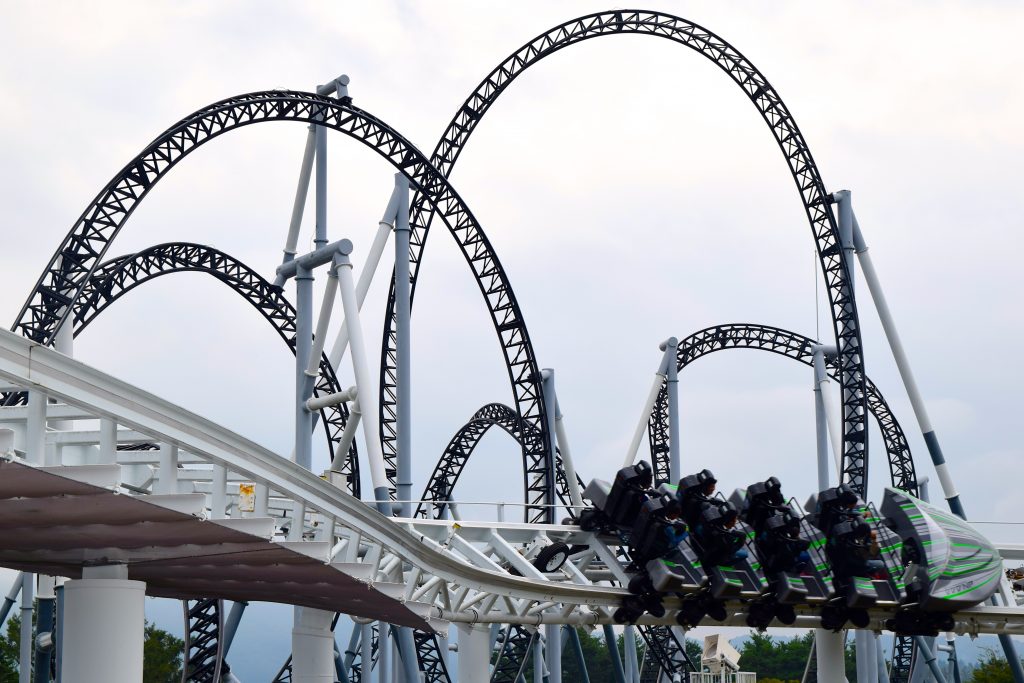
While Do-dodonpa was our top priority, it ended up being the least-impressive of the big 4. Credited as having the fastest acceleration of any roller coaster, Do-dodonpa‘s launch actually wasn’t as intense as we expected, and the rest of the ride is a bit bland. The new-for-2018 vertical loop that replaced the ride’s original top hat element is pleasant enough, but the transitions from old track to new track are not.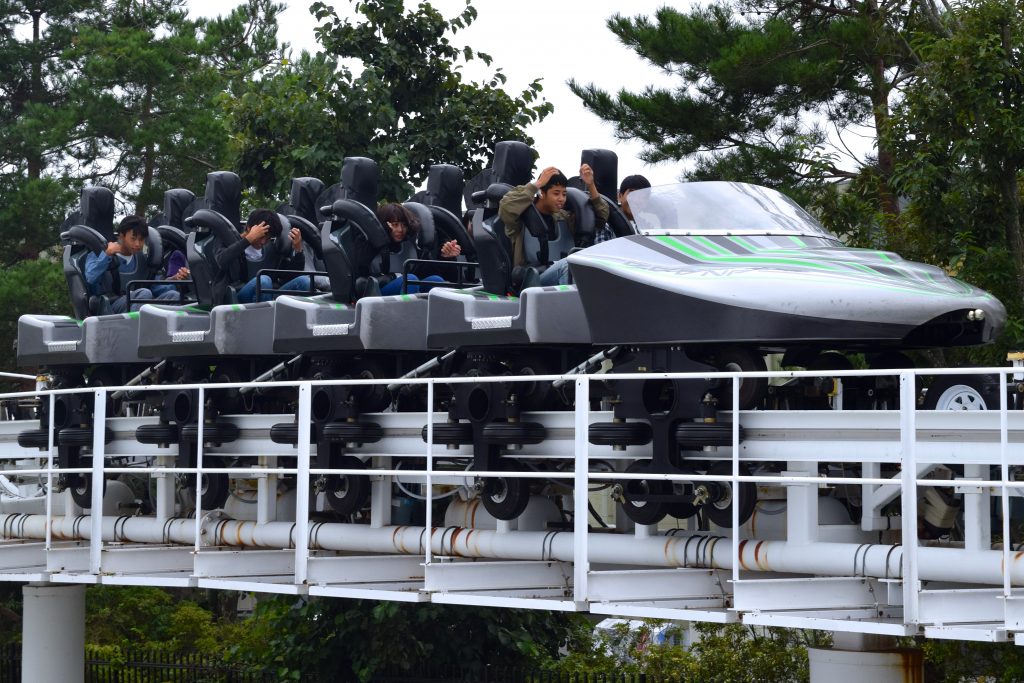
We used quick passes for every other coaster ride that day, which included a ride each on Takabisha and Eejanaika, and two rides on Fujiyama. $60/person to do this was a small price to pay – we were some of only a handful of people who got on all of the major coasters before they closed for the day due to rain.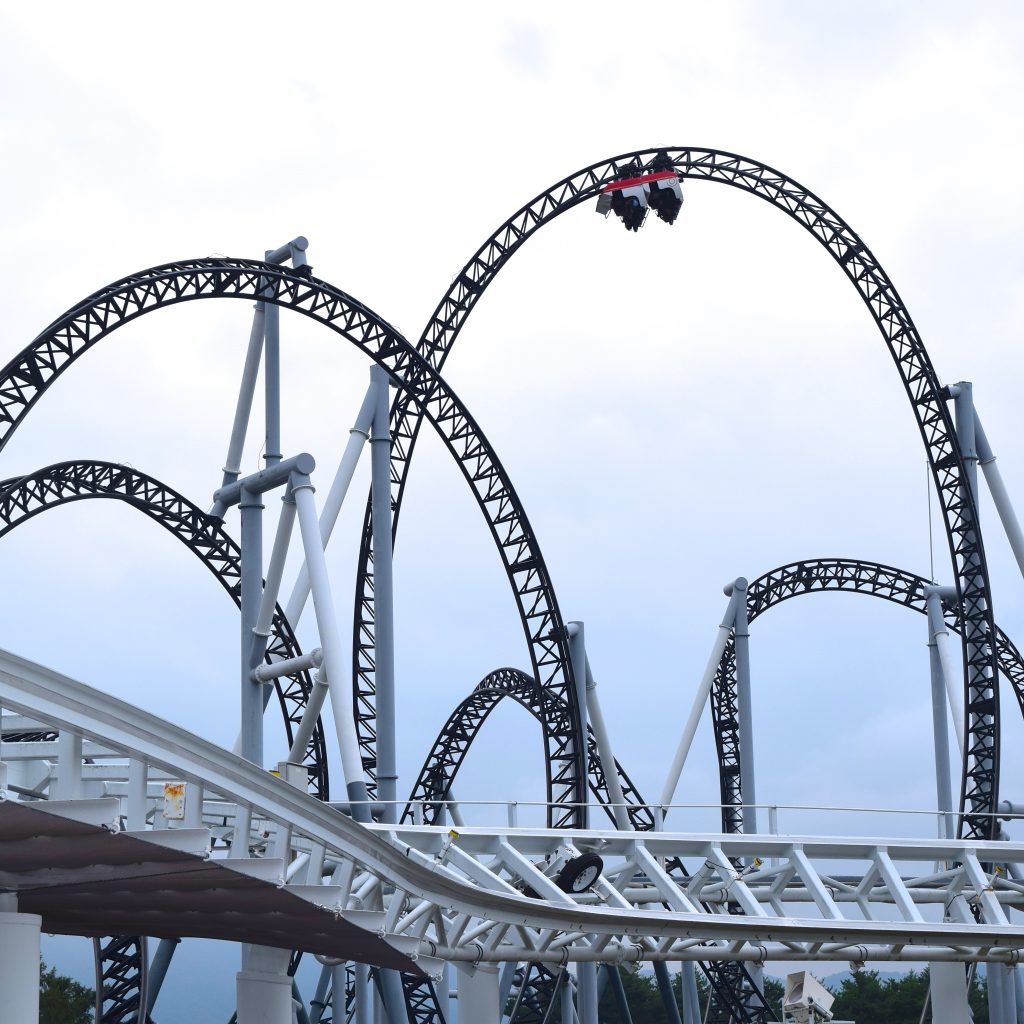
I think I would’ve liked Do-Dodonpa better if the restraints didn’t occupy so much of the riders’ field of vision. At least they’re comfortable, and the vehicles themselves look slick!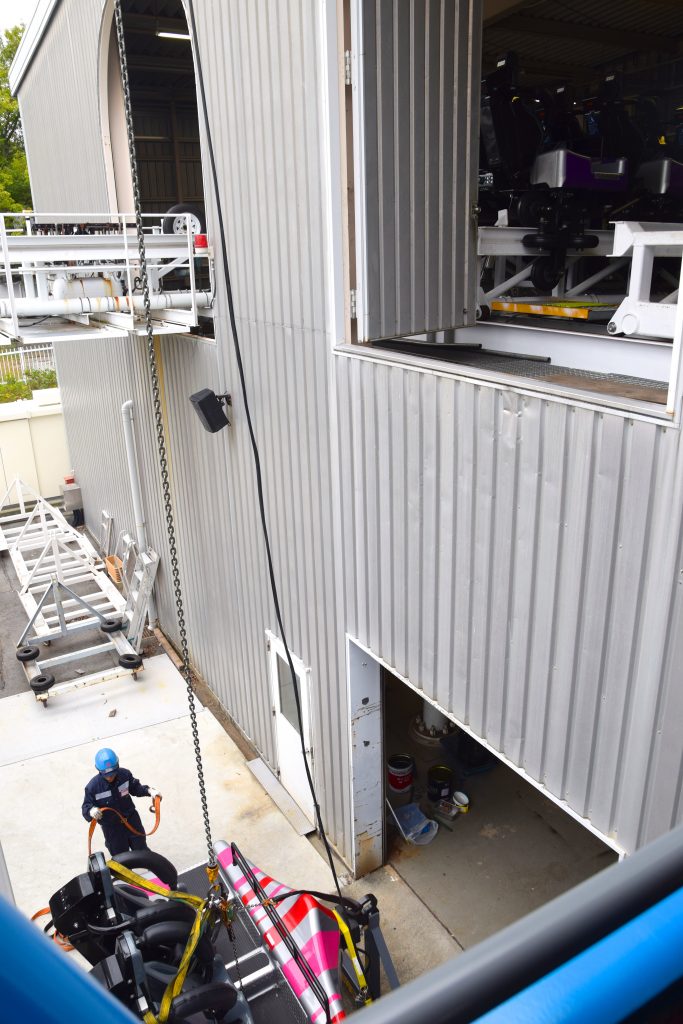
Speaking of slick vehicles, Fujiyama‘s shimmering gold and chrome rolling stock are a portrait of style and comfort (seriously).
“Best Ride of the Trip” went handily to Fujiyama, whose tremendous forces/dimensions and classic steel coaster feel make for a more thrilling ride than 95% of hyper coasters. It’s now my #2 coaster in the Mega/Hyper/Giga category behind Phantom’s Revenge.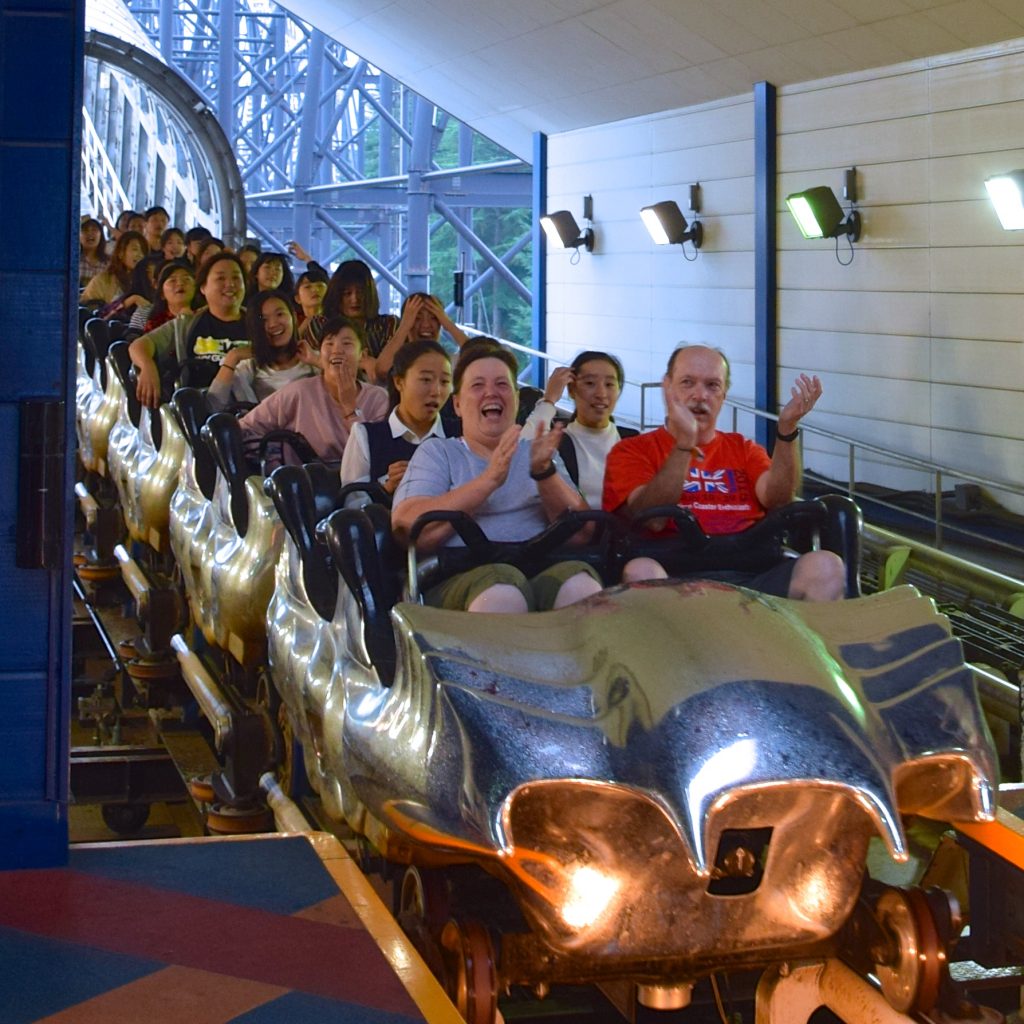
Enthusiasts and locals alike return to the station with looks shock and delight. Togo may not have a great reputation in the United States, but they’re every bit as deserving of praise as Arrow Dynamics or Schwarzkopf. They were the original purveyor of the modern steel coaster, and in their 50+ years, churned out some immaculate work that will only continue to appreciate in value. 
And then there’s Eejanaika, which opened a little less than 2 hours after the park opened. 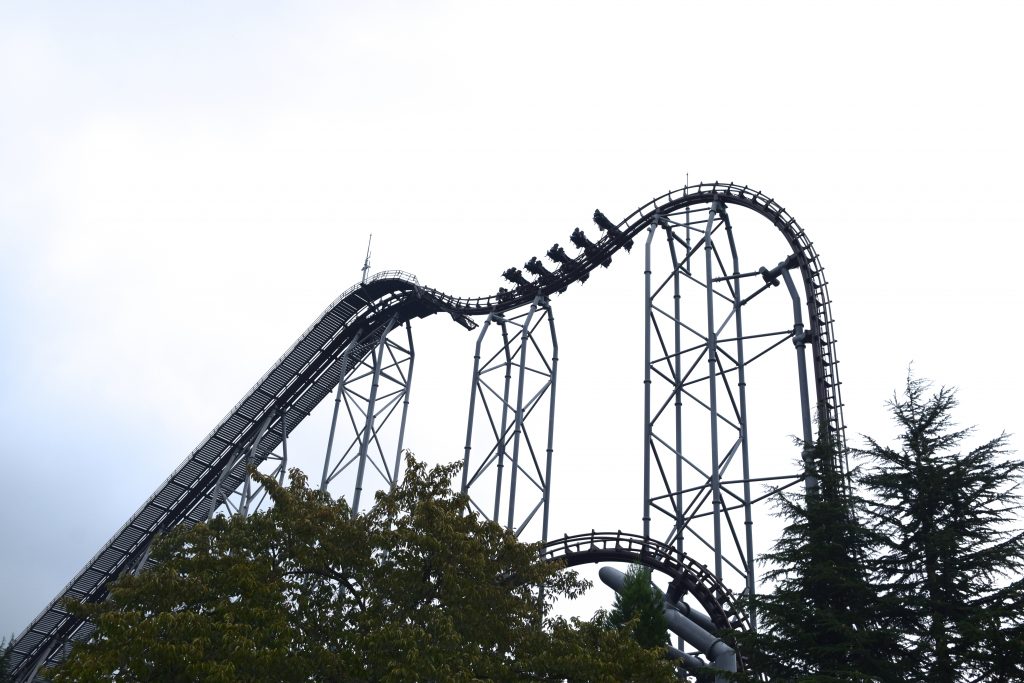
With Fujiyama turning out to be basically perfect, we now faced the inevitable crash of an immaculate high. 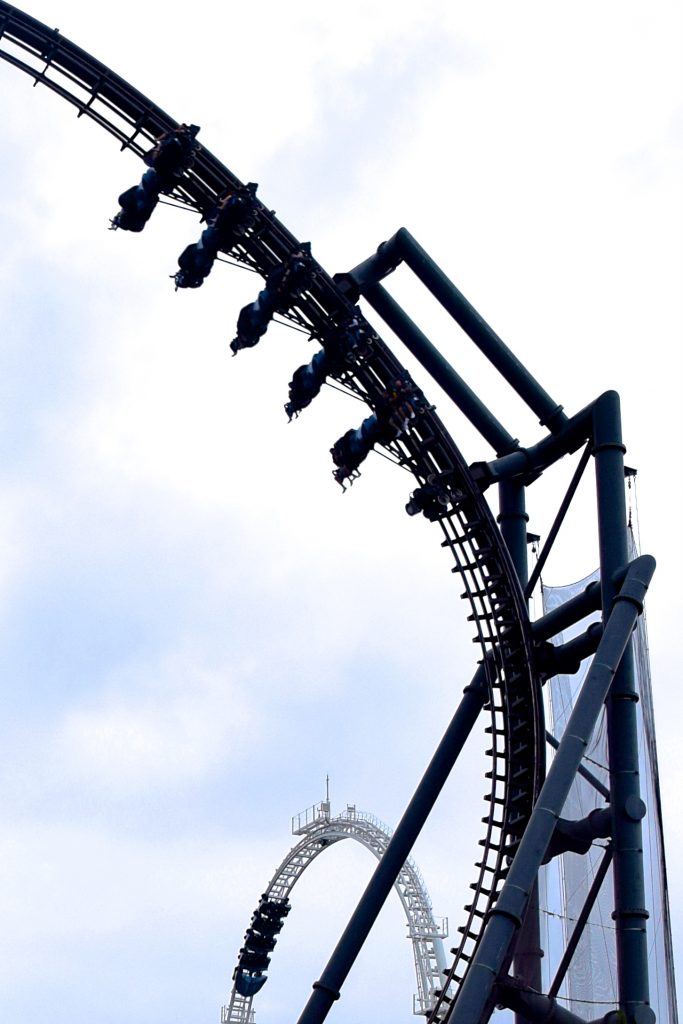
Horror stories of Eejanaika, S&S Power’s 2006 revamp of Six Flags Magic Mountain’s X, spread far and wide. “Violent discomfort” was the key description that came to mind.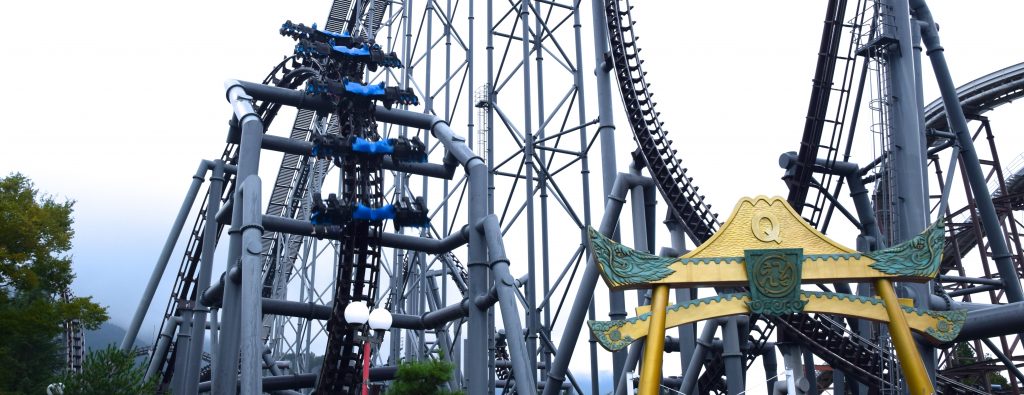
In a total shock to our systems, we found Eejanaika to be nothing short of exquisite. We rode in row 4, left wing, of the yellow train (I sat on the outside). It was terrific, thundering bliss.
The first drop and raven turn are not unlike X2 (50% larger, and with an extra backflip); after that the experience takes off in a wildly different direction. Where X2 features a camelback hill, Eejanaika has implemented the “Double-Double”, a full 360º barrel roll coupled with a forward seat inversion. X2‘s far righthand turnaround is replaced with an over-banked left turn that pitches the left side of the train just beyond 90º before yanking riders back inward. As Eejanaika continued, visual and physical sensations began to dissolve – reduced to blurs and tingling raindrops and hair standing on end. My only other recollection is the half twist into the brake run, where the body feels dragged against its own kinetic trajectory, like a vampire squid rapidly dragging prey with a single tentacle through the limitless black depths of the sea.
Eejanaika requires some recovery and maybe a cigarette. Shortly after we disembarked, the ride closed for rain.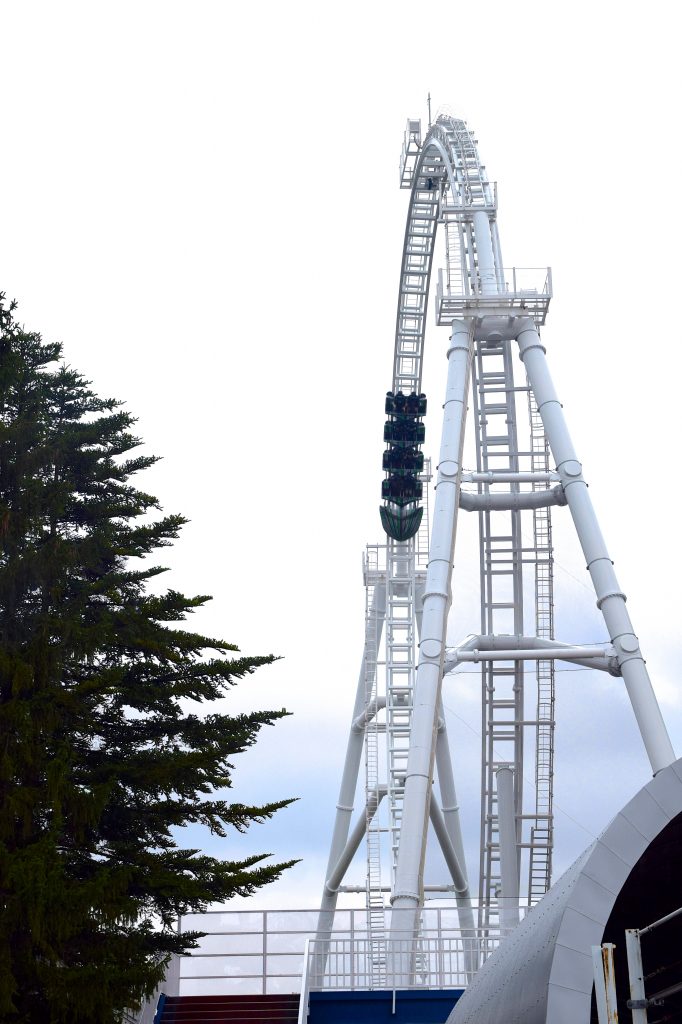
Luckily we still had time for our Takabisha and (2nd) Fujiyama rides before all of the coasters closed.
The 3 hours we had spent thus far at Fuji-Q were frantic but exhilarating. The rest of the day was spent mostly on reflection.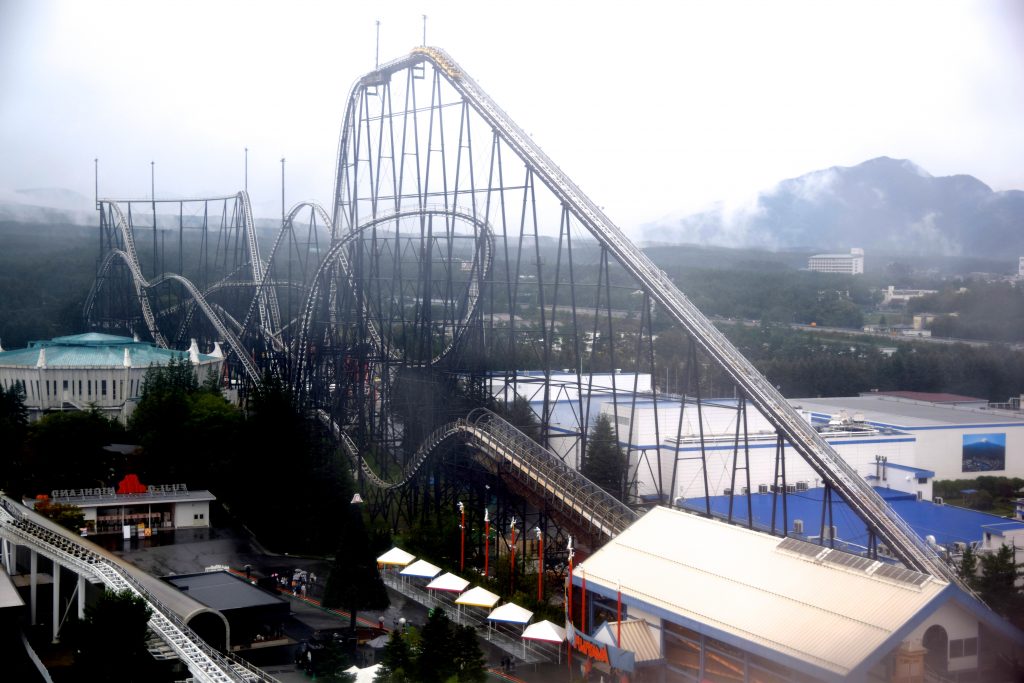
A Ferris Wheel ride gave us amazing views of the day’s achievements. From here we could agree that Fujiyama isn’t not the inspiration for other boxy hypers like Raging Bull and Goliath/Titan, and yet they are such far cries from this majesty.
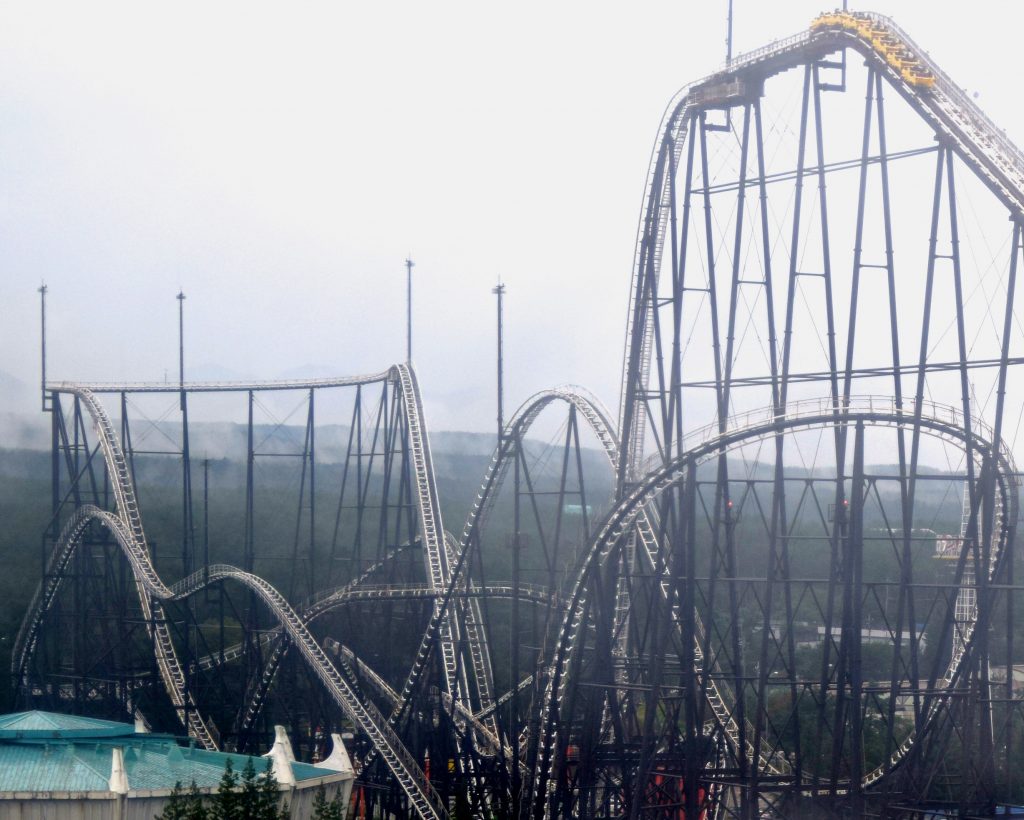
Fujiyama, Do-Dodonpa, and Takabisha are all scrunched together on one end of the park; Eejanaika is on the opposite side, all by itself.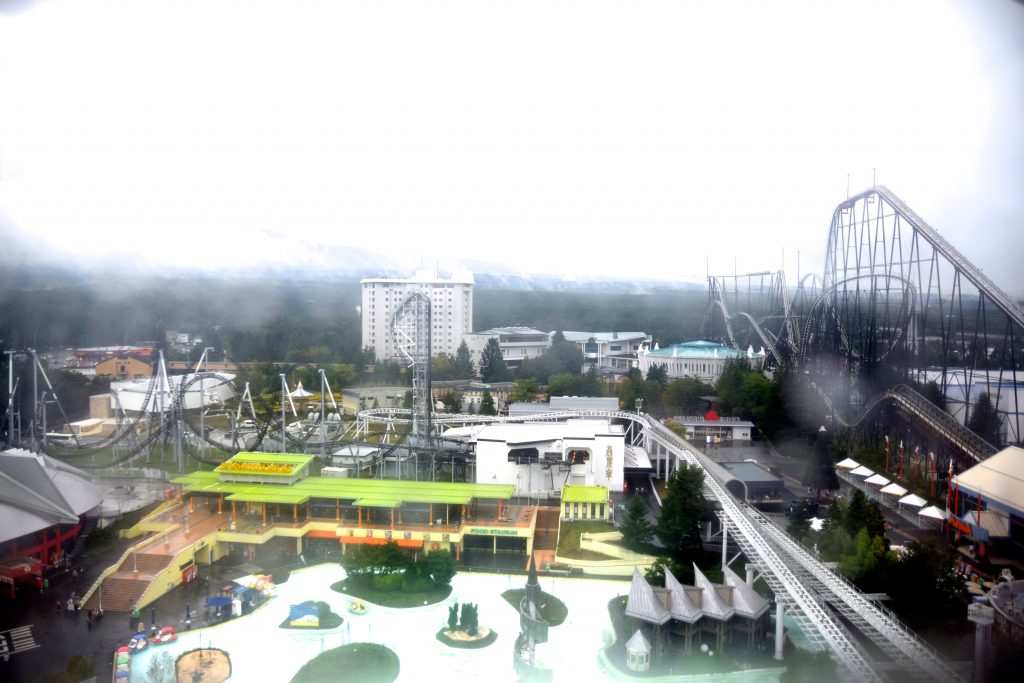
Do-Dodonpa doesn’t compare to later installments (Bullet Coaster at Happy Valley Shenzhen), but it’s still better than, say, Superman Escape from Krypton or Full Throttle. I fully expect Maxx Force at Six Flags Great America to be the better ride.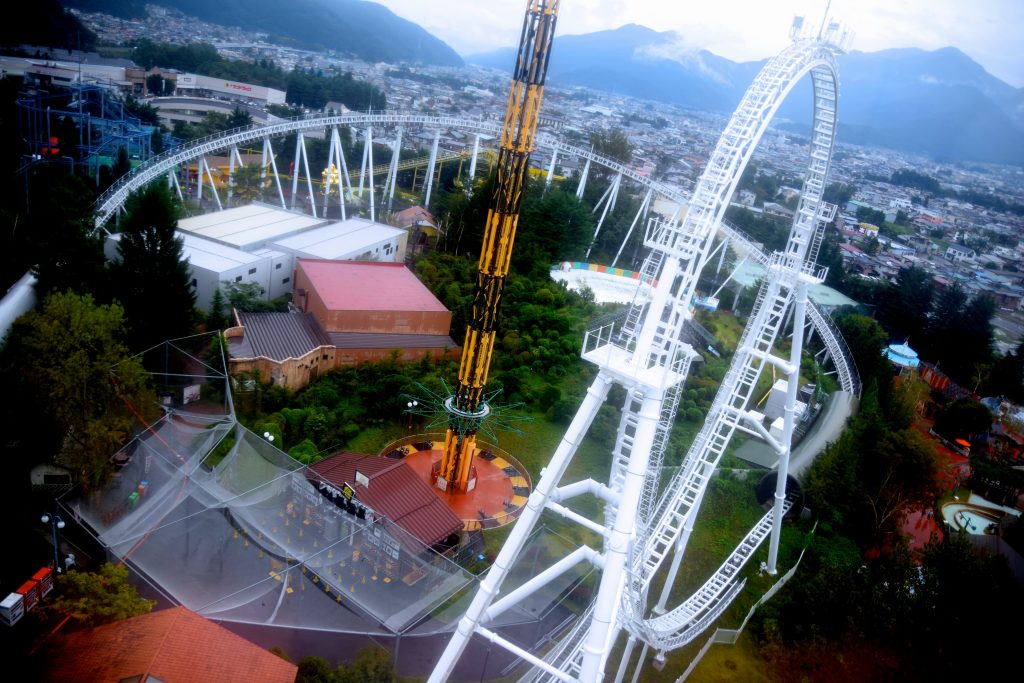
Look at this thing. Just look at it. I tense up when I think about it.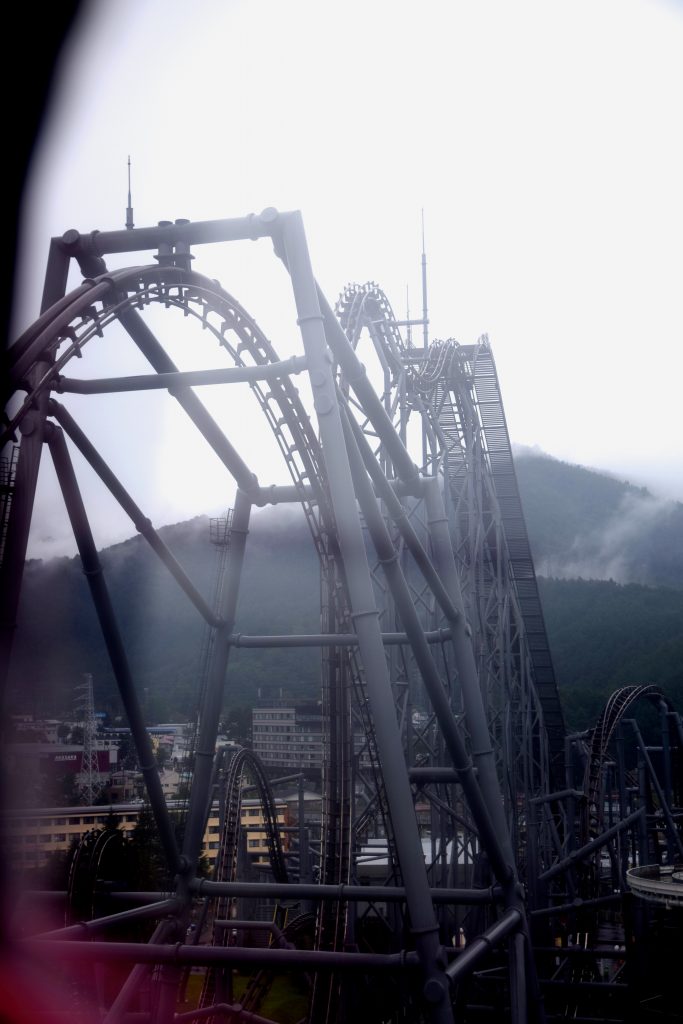
The park’s other coasters include a suspended family coaster (closed for refurb), a wild mouse, and a kiddie coaster(which we never even saw but knew was closed almost all day).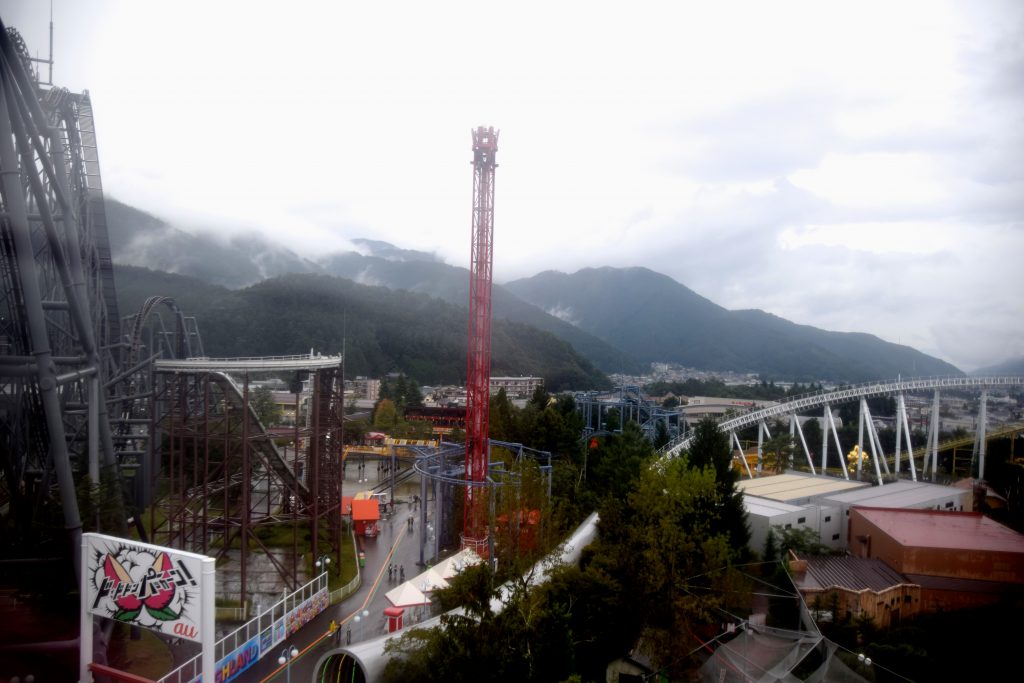
Takabisha was the coaster I was least concerned about riding (hence why we saved it for last), but it’s an excellent ride. In the bottom left corner is Fuji Airways, a *superb* flying theater ride centered around Mt. Fuji (which would be visible in this picture as well if it wasn’t such gross weather).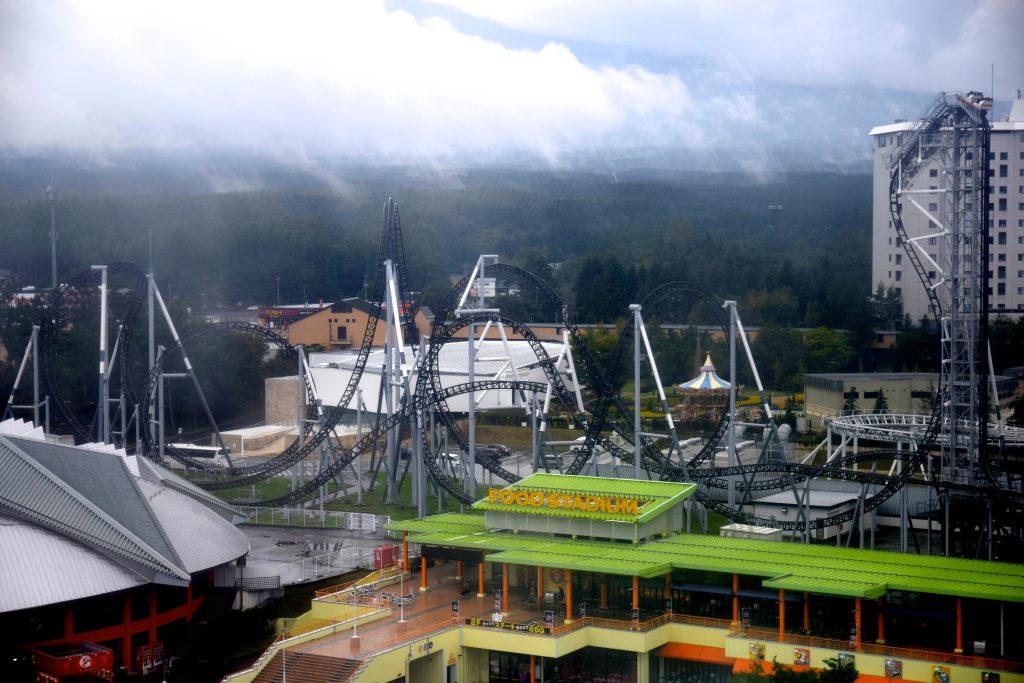
With a steeper, indoor version coming to Nickelodeon Universe at American Dream Meadowlands in New Jersey, Takabisha was only a priority once the other big 3 were squared away.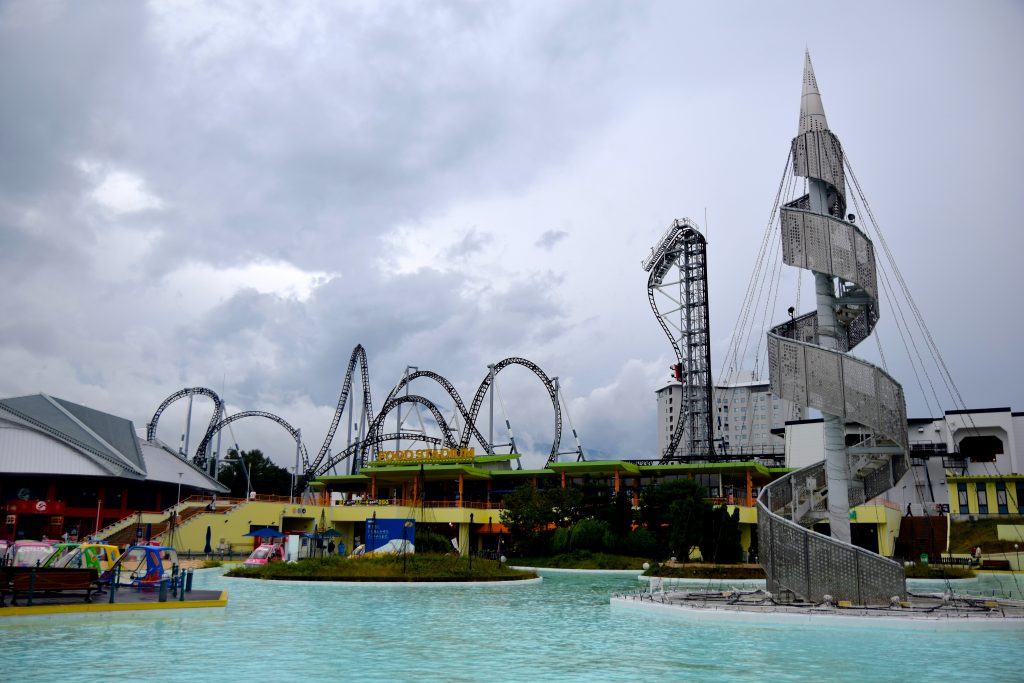
Despite the poor reputation Gerstlauers have for their rain operations (or lack thereof), Takabisha had the most total dispatches of the day, many of which were after Eejanaika and Do-Dodonpa had closed for rain.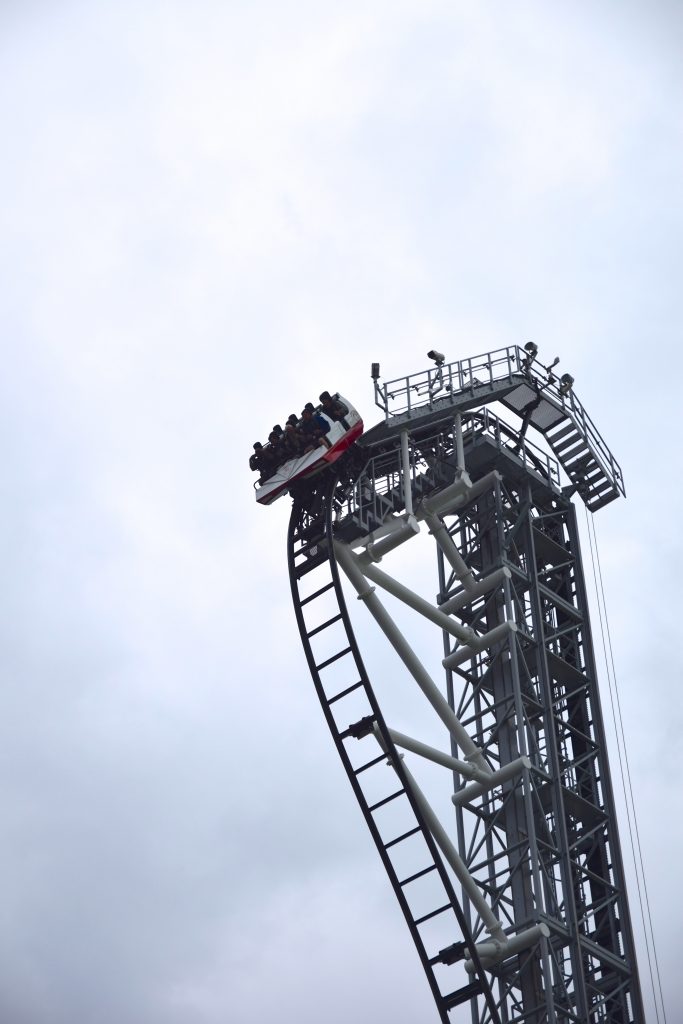
Takabisha combines 7 inversions, a 121º drop, and 62mph launch (quite a bit slower than Do-dodonpa‘s alleged 111mph launch). Our ride had the added element of needle-like rain on the face.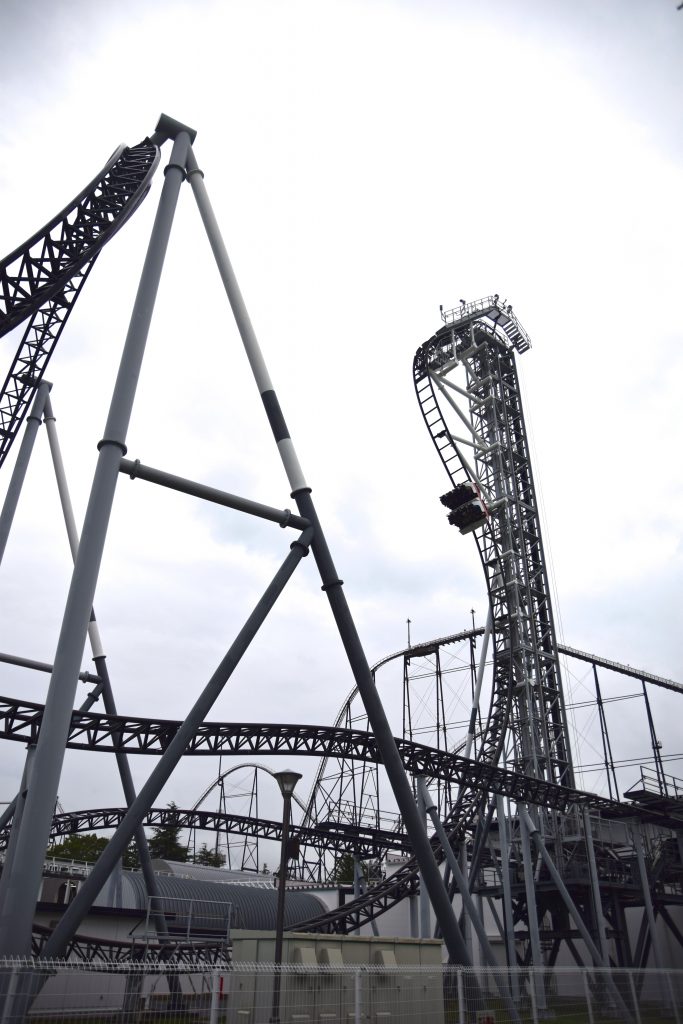
Can’t wait to ride this is a temperature controlled box where I can safely ride with my eyes open!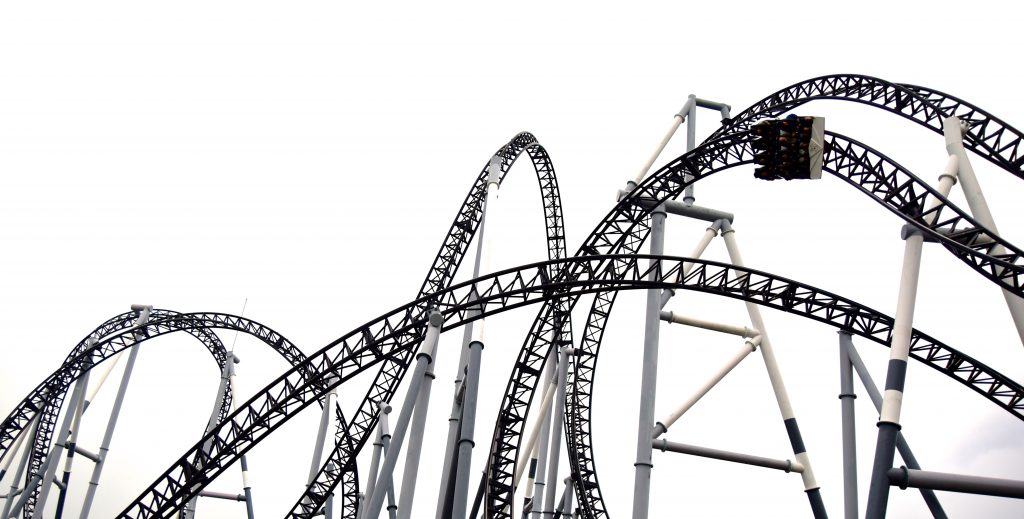
I spy with my little eye… a roller coaster on this Starbucks sign!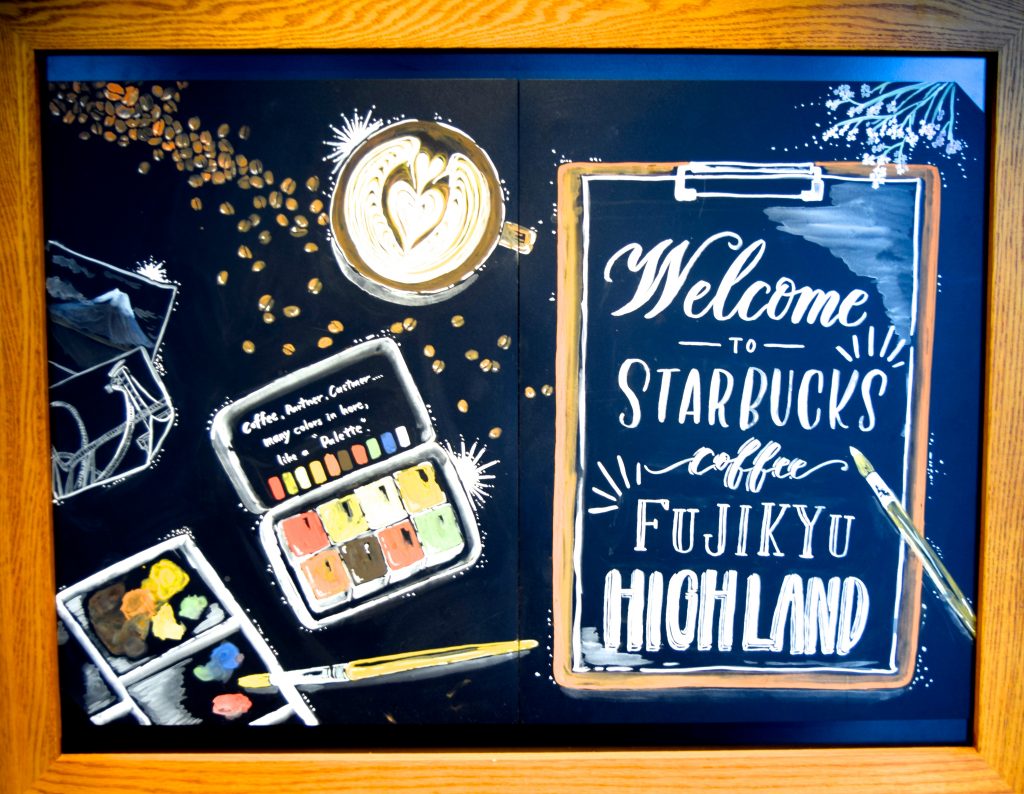
The bathrooms beneath Fujiyama.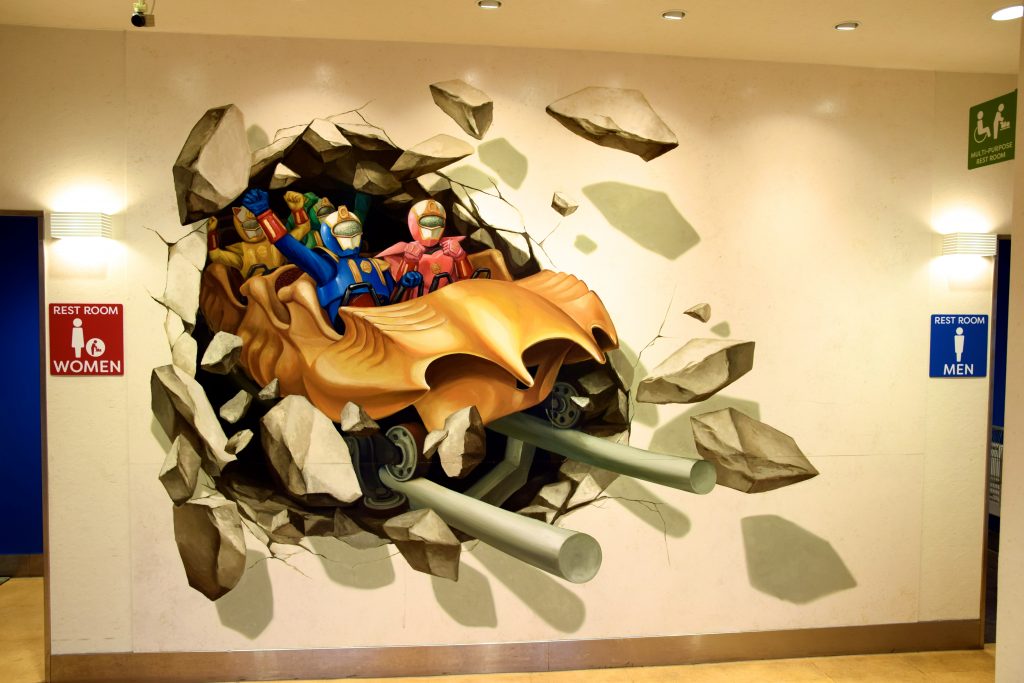
Fuji-Q may have its shortcomings, but they SET THE BAR with their merchandise. While Nagashima Spa Land, Ocean Park, Disney, and Universal all perform amazingly in the department, Fuji-Q is just a cut above.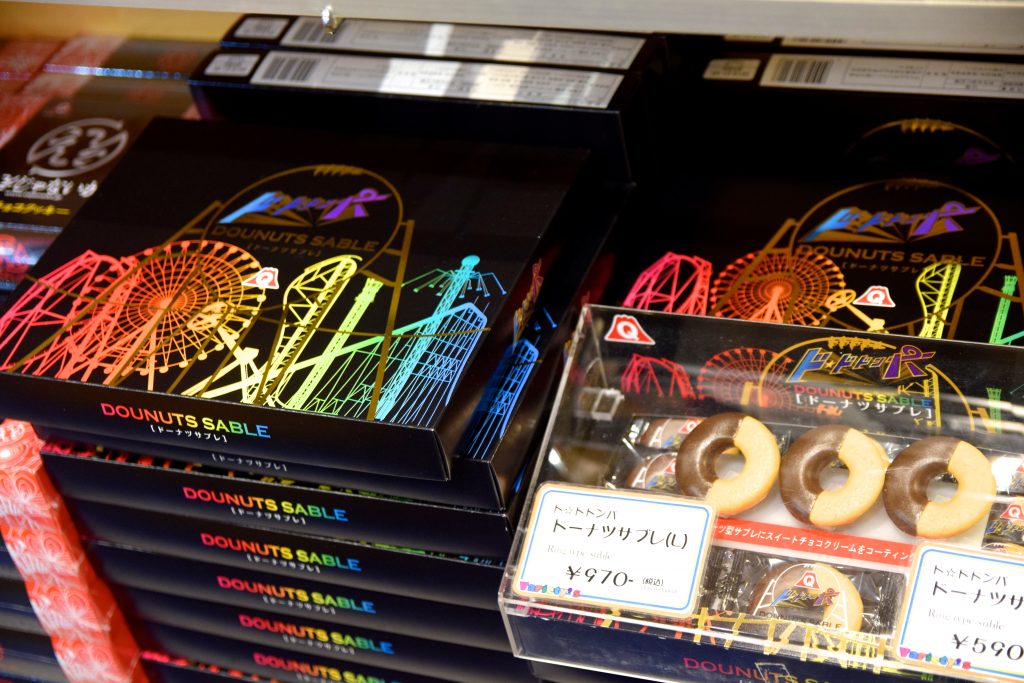
Like the other major Japanese parks, they have countless ride-themed cookie boxes with amazing artwork on them.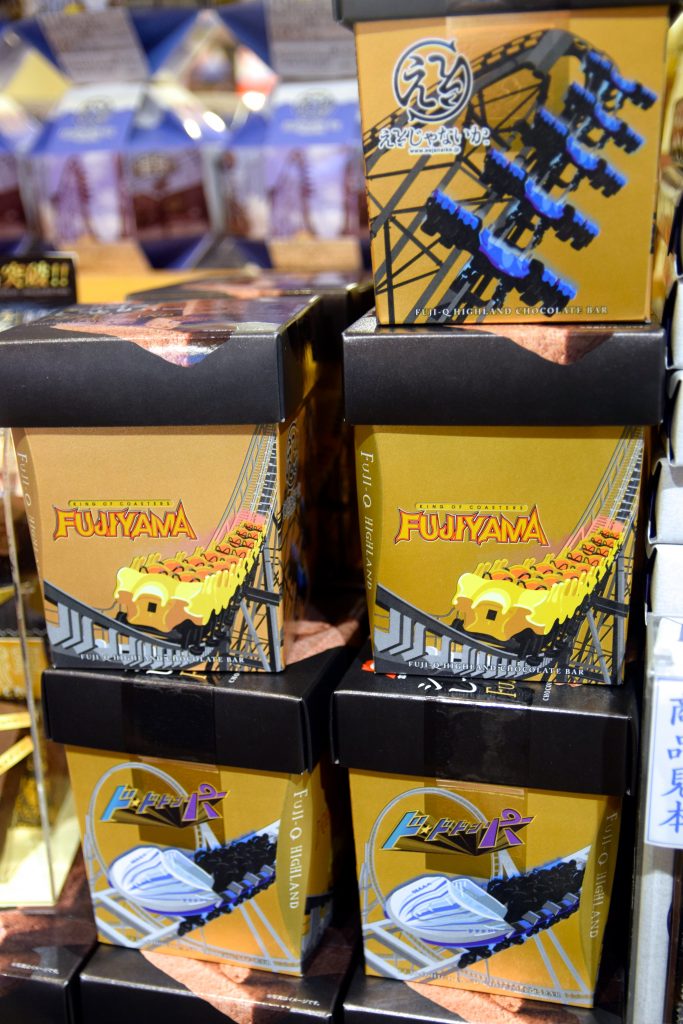
They even have one that’s a 3D rendering of Fujiyama‘s lead car!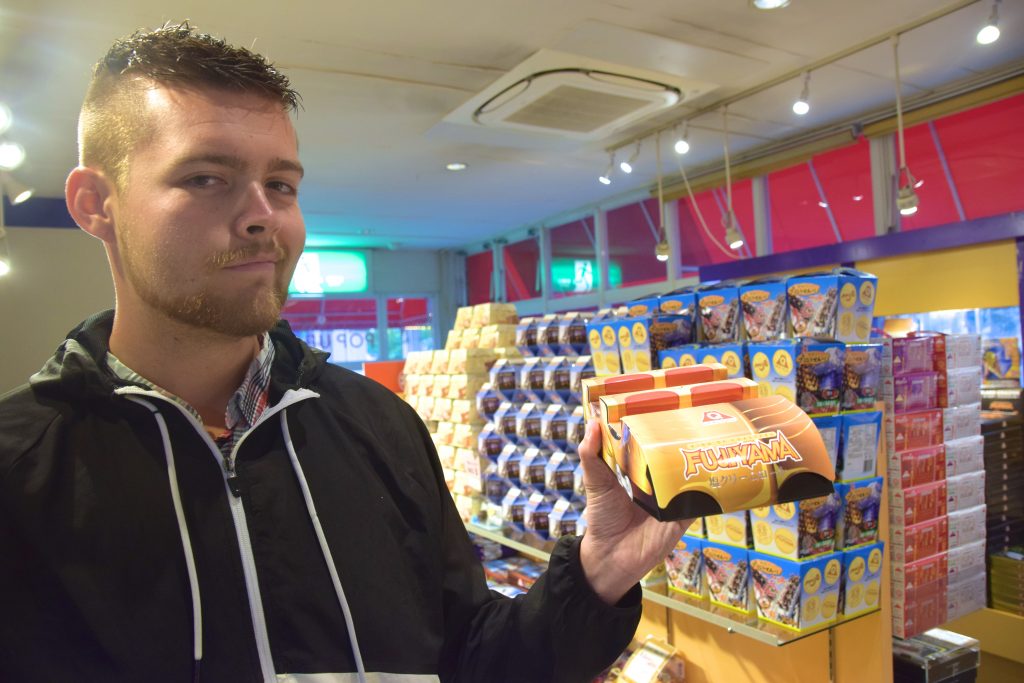
Fujiyama rice crackers? Do-dodonpa Takara Tomy model train? Eejanaika die-cast vehicle cell phone charm with rotating seats? Takabisha Hello Kitty keychain? We bought it all – and then some!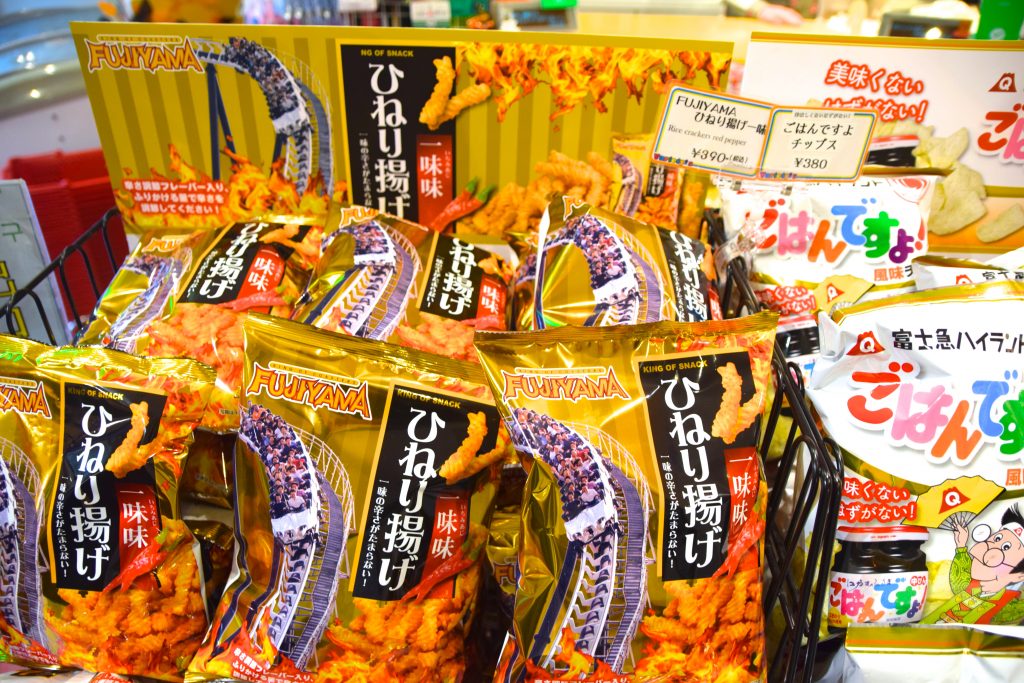
Between the quick passes and the merch, Fuji-Q got a LOT of money out of us. No regrets!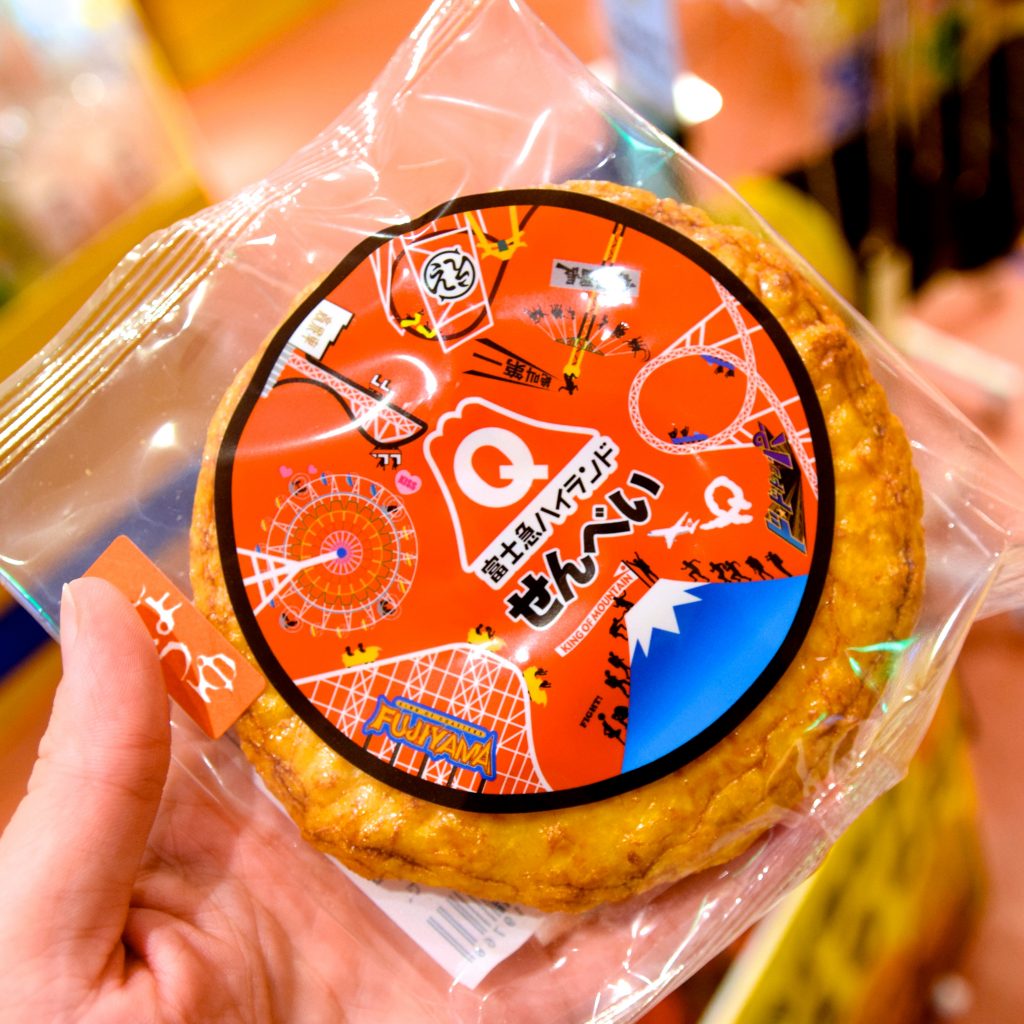
These rice crackers aren’t just a pretty face, either; they’re delicious, vegan, and come in several flavors!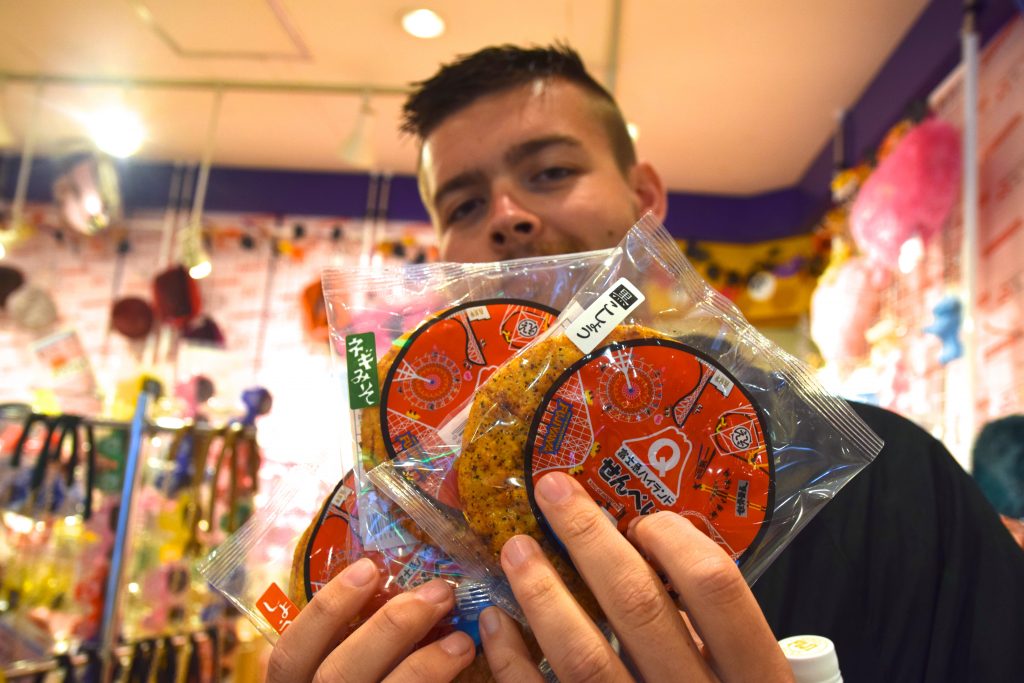
Japanese folk art-inspired Eejanaika tea towel, for that special someone in your life.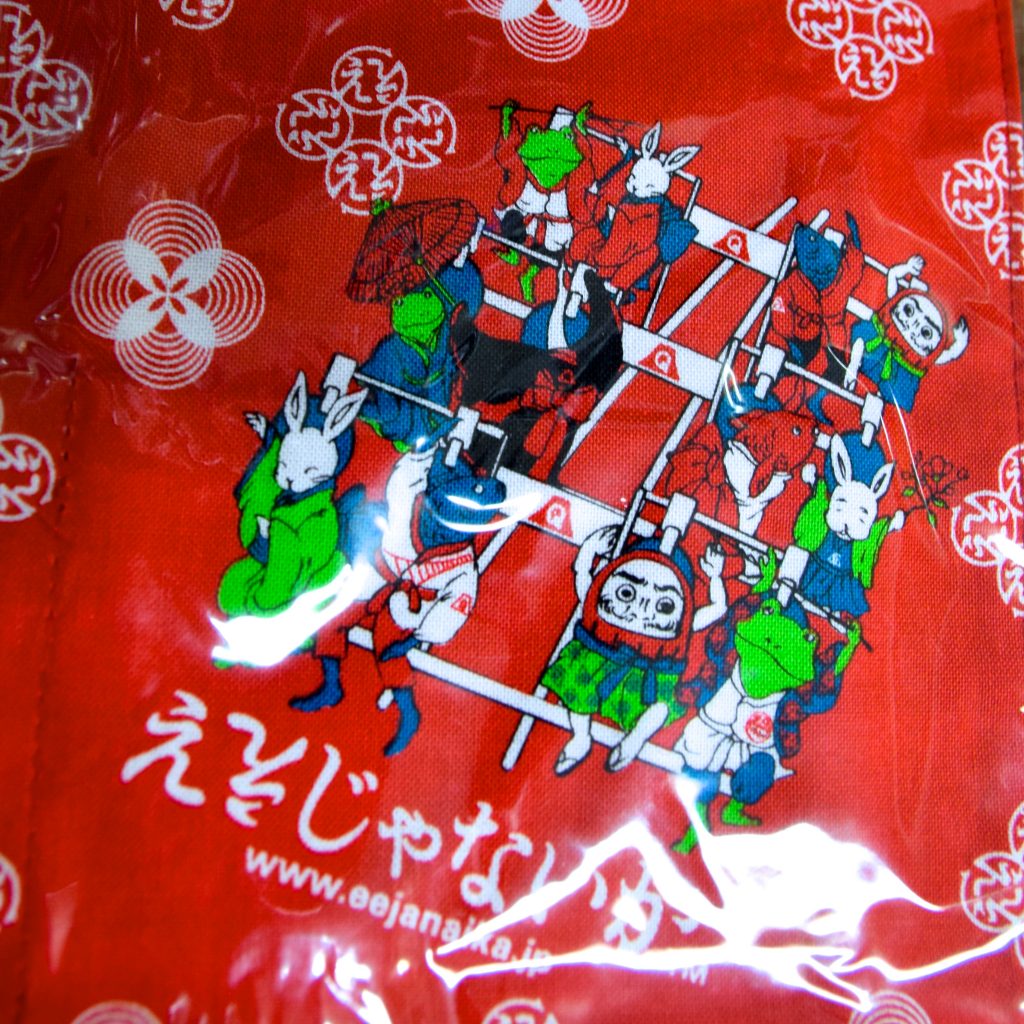
Farewell, Fuji-Q! You’re a real dream come true!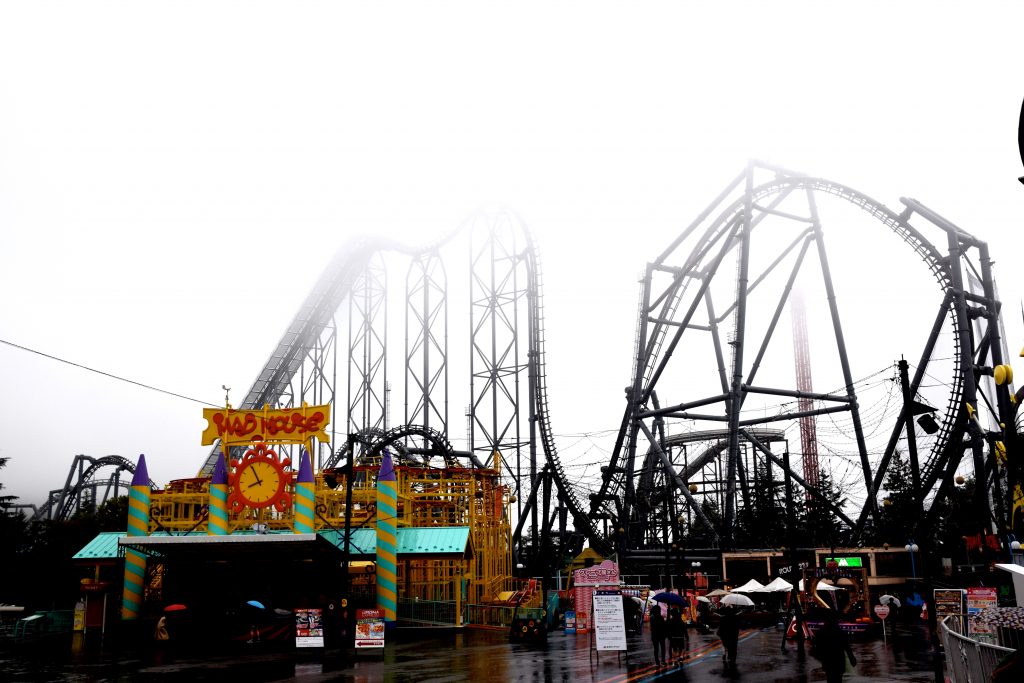
We’ve got one last stop on our Japan adventure! Join us for one WILD day at Universal Studios Japan!


